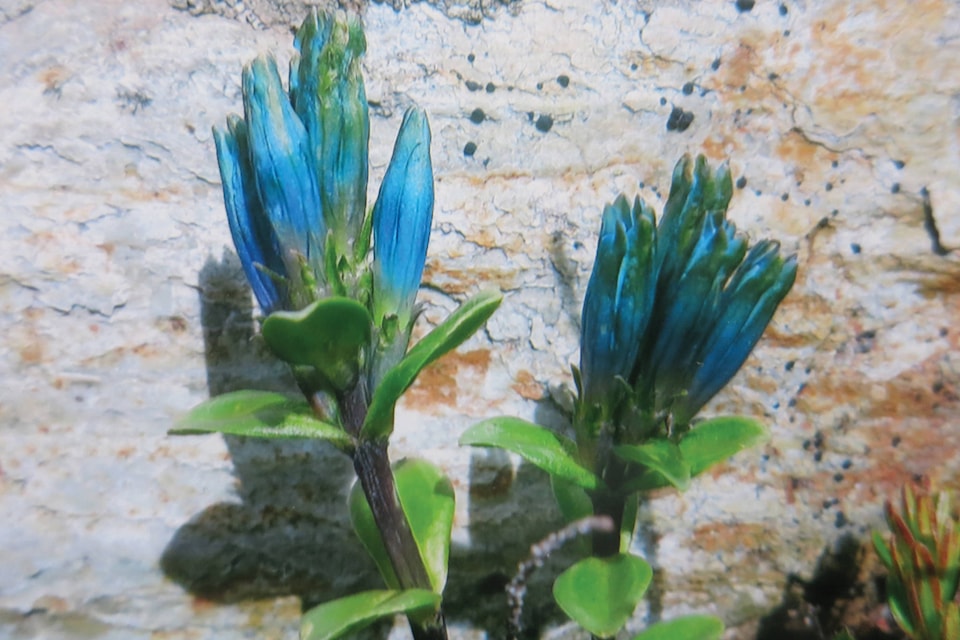People’s names, many years ago, may have related to what they did, where they lived, who their father was or what kind of work their father or family did, what characteristics they had or perhaps even to what people expected of them. I suspect Erik the Red had red hair. I am not sure how lucky Leif the Lucky was. Edward, at one time, meant custodian of property, Edwin, gainer of property, and Edgar, guardian of property. A similar trend has prevailed with plant and wildlife names — woodpecker, nuthatch, hummingbird, cattail and so on. Then, to go with the common name, there is a scientific name, which is usually in Latin and, in much the same way, may denote a characteristic of the plant or creature that differentiates it from others closely related.
Many people have three names. A few have two names, while others have four. Plants and animals have a scientific name that is made up of two names. These denote a specific plant or animal, a species. This system of naming is called “binomial nomenclature”, two-name classification. This system is used world over by scientists, botanists, professionals and amateurs, so that if a common name differs from one country to another or within a country, the Latin name remains the same. This enhances the communication side of literature and reports.
Distinct varieties of, say, a specific plant species, are sometimes given a third name that doesn’t generally go with the scientific name but may denote a significant feature that distinguishes the same species but found in a different habitat or wildlife region. The third name would represent a variety, which, if cross-bred with the other, would be expected to produce plants true to the species. One of the requirements of a true species is that no fertile offspring will result if that species cross-pollinates with another species. Most often there is no seed or embryo development. That’s why birch trees are always birch trees and walnut trees are always walnut trees.
There have been a significant number of observations where a species population became divided by some geographical or habitat barrier for an extended period, say 20 years, resulting in the development of two species. This has been observed most often in insect populations, where there are many broods per season. Now let’s focus on members in the Plant Kingdom with interesting scientific or Latin names.
The scientific name of the local sprawling shrub, kinnikinnick or bearberry is Arctostaphylos uva-ursi. Bear, translated, is arctos and berry is staphylos. That is the genus or first name in the scientific name. The second name, the species name, is uva-ursi, uva being berry or embryo, and ursi being bear. (There is a short road north of Bonner’s Ferry, Idaho, called Ursus Lane.) Worthy of note is that the scientific name of the North American black bear is Ursus americana, named after where it is found.
The edelweiss flower has been popularized by theatre and yet the most striking and favoured flower in Germany and Switzerland is Gentianna acaulis, and can be found growing in a few local gardens. This species of Gentian (pronounced jen-shen) bears cobalt blue trumpet-shaped flowers, three cm long and two cm wide. The species, the second name acaulis, simply means stemless — a is against or not and caulis refers to stem. There are two Gentian species found in the Kootenay Lake area. One is Gentianna glauca. The scientific name is derived from a common name. The genus Gentianna, according to Pliny, was chosen by the botanist who first described it, in honor of King Gentius, of Illyria.
Take willow shrubs for another example. The family name (up one level from genus) is Salicaceae. The genus is Salix, which, in the Kootenay Lake drainage, includes many species. Salix comes from a compound found in the bark and leaves that is very similar to acetylsalicylic acid, a main part of aspirin.
Does that put some sense into scientific names? Welcome to Botany 101!
Ed McMackin is a biologist by profession but a naturalist and hiker by nature. He can be reached at 250-866-5747.
